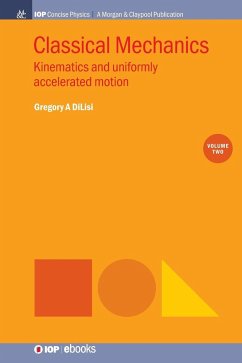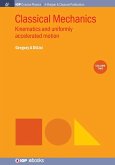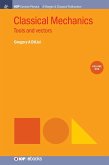Classical Mechanics teaches readers how to solve physics problems; in other words, how to put math and physics together to obtain a numerical or algebraic result and then interpret these results physically. These skills are important and will be needed in more advanced science and engineering courses. However, more important than developing problem-solving skills and physical-interpretation skills, the main purpose of this multi-volume series is to survey the basic concepts of classical mechanics and to provide the reader with a solid understanding of the foundational content knowledge of classical mechanics. Classical Mechanics: Kinematics and Uniformly Accelerated Motion focuses on the difference between asking, 'How does an object move?' and 'Why does an object move?'. This distinction requires a paradigm shift in the mind of the reader. Therefore, the reader must train themselves to clarify, 'Am I trying to describe how the object moves or why the object moves?'.








